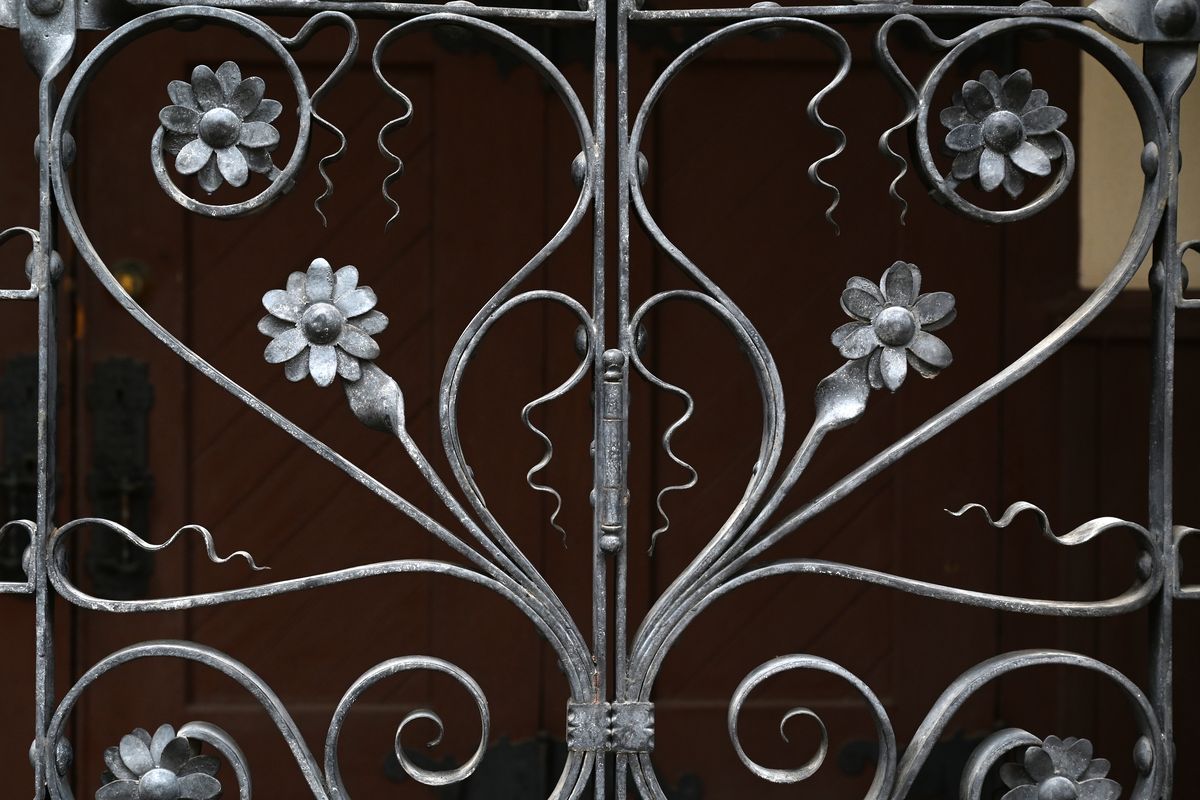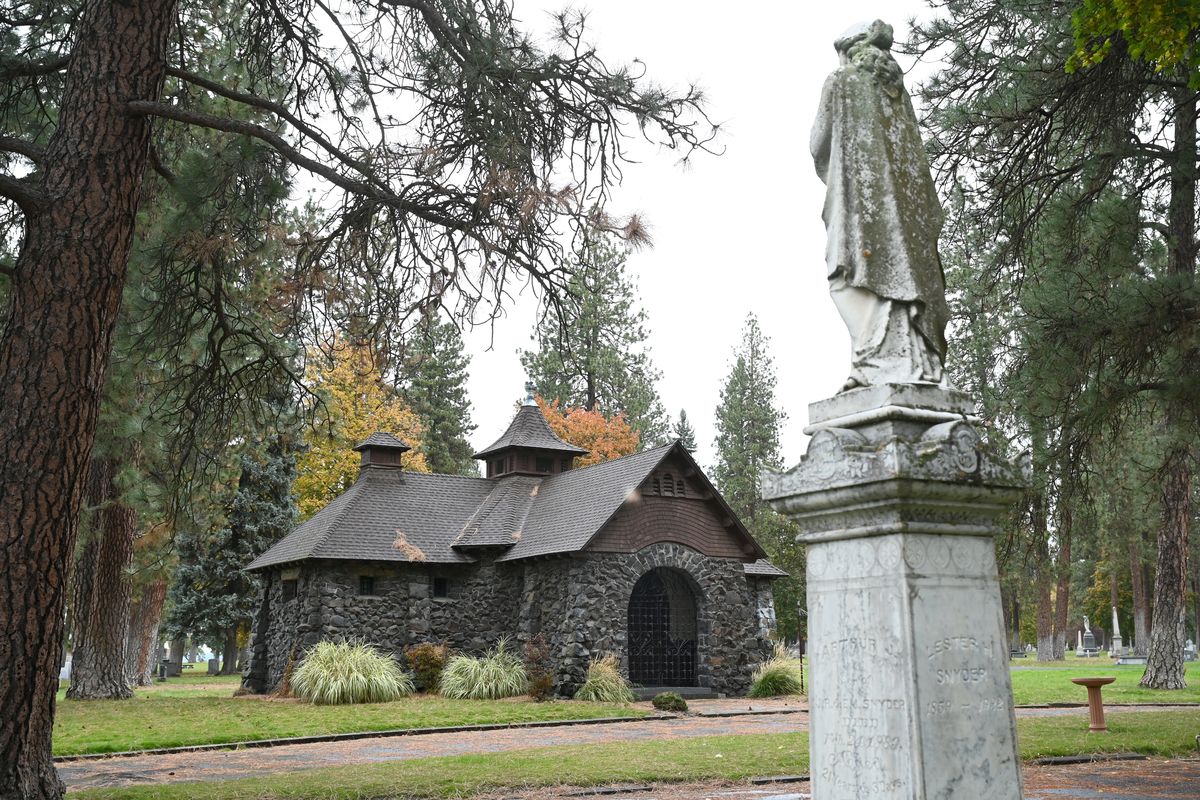Iconic Spokane architect’s chapel at Fairmount is getting restored

Jim Alma always liked the look of the lava rock chapel, but its sounds were what stuck with him – specifically, the ringing of the Fairmount Memorial Rock Chapel bells.
Alma, 87, first heard them nearly 50 years ago at a funeral service for his two sons who died in infancy. They were buried close to the chapel, and Alma remembers feeling comforted by the sounds of those echoing bells.
In May 2019, Alma attended a funeral service for his wife in front of the same chapel.
“At that time I noticed that there was no music coming from the tower,” Alma said. “Also you couldn’t get into the building; they had it locked up with chain and a padlock. And I have no idea, something just came over me.”
The retired Spokane County sheriff’s deputy approached the Fairmount Memorial Association with an idea: restore the 130-year-old lava rock chapel designed by one of the most prominent architects of Spokane, Kirtland K. Cutter.
Alma donated $30,000 to kickstart the project, about a third of the estimated $105,000 cost.
“It just made me all warm and fuzzy inside,” Alma said. “I knew that my wife would really appreciate that because she was that type of person, knowing that I would have done something like that.”
The rock chapel has stood on Fairmount’s grounds since 1890, when Cutter was commissioned for it. The young architect moved to Spokane in 1888, the same year Fairmount opened. Cutter soon developed a reputation creating palatial mansions for Spokane’s mining and banking millionaires. He is credited with designing the Davenport Hotel, the Clark and Glover mansions, and the Idaho State Building featured in the Chicago World Fair.
Some of the first people buried at Fairmount were the mining and banking millionaires and businessmen for whom Cutter built homes, said David Ittner, Fairmount Memorial Association’s president and chief executive officer.
“Cemeteries are an overlooked but critically important facet to our community, and there’s a ton of history here,” Ittner said. “There’s name after name of people you would recognize in each of our cemeteries, right on the monuments.”
Ittner said the Rock Chapel, as it was named by Fairmount, has seen minor repairs over the years, but never a restoration of this scope.
Projects planned for renovation include removing old masonry and replacing it, – restoring the flooring, and painting, Ittner said. The structure of the chapel remains strong, which means they won’t have to do any major construction, he said.
“It’s very important for us to remain period-correct with that building and not doing anything that would devalue the original design,” Ittner said.
Cutter came to be known for his use of natural materials when designing structures, said Phil Gruen, associate professor in the School of Design and Construction at Washington State University’s Voiland College of Engineering and Architecture.
“When you start to look more closely at a lot of the buildings, there is a quality in many of them that appears like it grew out of the landscape using more natural materials, namely rocks,” Gruen said.

In Spokesman-Review articles about Cutter’s work, the Ohio-born architect was regularly credited with using Swiss and Tudor styles, but Gruen said these labels can be misleading. Cutter had a background in art, so he had a unique approach to projects, Gruen said, but no professional architectural education when he came to Spokane in his 20s.
Cutter had a certain mystique about him because he included influences from many corners of the world, Gruen said. It’s why many of Spokane’s wealthiest commissioned his work, though the breadth of his involvement on projects – like the Davenport – has been disputed.
“He was somewhat in demand as an architect who could design your most extraordinary fantasy at that time if you had the money, because he designed in so many styles … That might raise the question about whether or not he was fully converted about a particular look or aesthetic,” Gruen said.
For Alma, the restoration of the chapel at the Fairmount cemetery means solidifying part of Spokane’s history.
“All those headstones. Some of those date back to the 1800s,” Alma said. “I like history and I like preservation of old buildings. I want to preserve our history and our culture and things like that. And so this seemed to be the right place.”